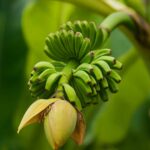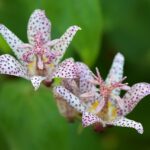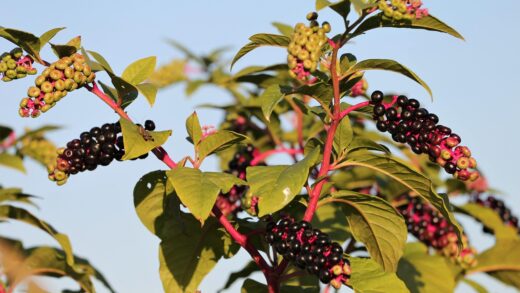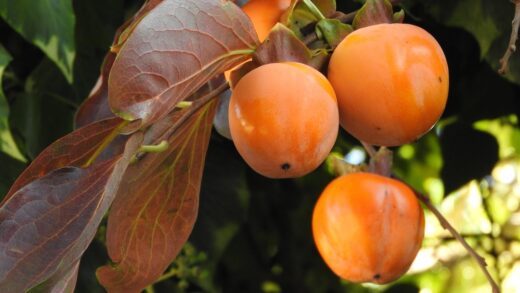The Hosta, a beloved shade-tolerant perennial in gardens, captivates every garden enthusiast with its unparalleled foliage and modest flowers. A crucial element for the successful cultivation of this plant is ensuring an adequate water supply, which fundamentally determines the size and color intensity of the leaves and the overall health of the plant. Although Hostas are considered relatively easy-to-manage plants, their water needs are often underestimated, leading to various growth problems. Mastering the correct irrigation practices is essential for these wonderful plants to adorn the shady corners of the garden in their full glory. Both lack of water and overwatering can harm the plant, so it is important to understand the factors that influence the Hosta’s water requirements.
In their native habitat in East Asia, Hostas typically live in humid, wooded areas and along stream banks, where the soil is consistently moist but well-drained. This evolutionary background defines their basic needs in a garden environment as well, as their root system requires continuous moisture for proper development. The large, fleshy leaves transpire a significant amount of water, especially during the warmer months, so the water supply must be consistent. If the soil dries out, the leaves quickly begin to wilt, the leaf margins may turn brown, and the plant’s growth slows down. Long-term water deficiency can lead to the weakening of the plant and an increased susceptibility to diseases and pests.
Proper watering is not only necessary for survival but also maximizes the plant’s aesthetic value. With an abundant and regular water supply, Hosta leaves become much larger, fuller, and more vividly colored. Particularly, large-leaved varieties, such as ‘Sum and Substance’ or ‘Empress Wu’, require a significant amount of water to reach their genetically encoded maximum size. Therefore, irrigation is not just a maintenance activity but also a tool in the gardener’s hand to actively contribute to enhancing the decorative value of the plant stock. Establishing a consistent watering routine will pay off in the long run in the form of lush and healthy foliage.
It is important to emphasize that although the Hosta is a water-loving plant, standing water, meaning a root system constantly submerged in water, is at least as harmful to it as drought. Overwatering can lead to root rot, which is one of the most common causes of the plant’s demise. This fungal disease is difficult to detect in time, as the symptoms – yellowing, wilting leaves – can initially resemble signs of water deficiency. Therefore, ensuring well-drained soil and carefully choosing the watering frequency is essential. The goal is to maintain a consistently moist, but not waterlogged, soil condition, which creates an optimal environment for the roots.
Factors influencing watering frequency and amount
The water needs of Hostas are influenced by numerous environmental and plant-specific factors, so there is no single, universally applicable watering rule. One of the most important factors is the type and structure of the soil. Sandy, loose-structured soils drain water quickly, thus requiring more frequent watering, while clayey, heavy soils can retain moisture for a longer time, so they need to be watered less often. Amending the soil with organic matter, such as compost or well-rotted manure, before planting can significantly increase its water-holding capacity while also ensuring proper drainage.
More articles on this topic
The plant’s location in the garden is also a determining factor. Although Hostas prefer shady spots, the amount of sunlight they receive can vary significantly. Specimens exposed to more sunlight, especially the afternoon sun, transpire much more water and thus have higher water needs than their counterparts in full shade. For varieties planted in sunnier locations (e.g., yellow-leaved or fragrant-flowered cultivars), it is particularly important to pay attention to regular water replenishment to prevent leaf scorch. Windy locations also have a drying effect, which also increases the need for irrigation.
The size and age of the plant are also important considerations. The root systems of freshly planted, young Hostas are still undeveloped, so they are unable to draw water from the deeper layers of the soil. Therefore, they require more frequent and thorough watering in the initial period for successful establishment. In contrast, large, well-established clumps that have been in the same place for several years have a much more developed root system and utilize soil moisture more efficiently. However, due to their large leaf surface area, they require more water overall, especially during the summer heat. Large, corrugated-leaved varieties have the highest transpiration rate.
The changing of seasons and current weather conditions are also key to developing an irrigation strategy. In spring, during the emergence period, the plants need plenty of water for the rapid development of leaves. In summer, during hot, dry periods, the frequency of watering should be increased, even to several times a week. In autumn, as temperatures decrease and the weather becomes more rainy, the amount of watering should be gradually reduced to allow the plant to prepare for its winter dormancy. Excessive autumn watering can increase the risk of winter frost damage.
Mastering the correct irrigation technique
The most important rule for watering Hostas is to water deeply and thoroughly, but less frequently. Frequent, shallow watering encourages the roots to stay in the top layer of soil, where they are much more exposed to drying out. Instead, aim to have the water penetrate the deeper layers of the soil, at least 15-20 centimeters deep, during each watering session. This promotes the development of a deeper, stronger root system that is more resistant to dry periods. For proper watering, use a slow stream of water to allow the water to soak into the soil instead of running off the surface.
More articles on this topic
The ideal time for watering is in the early morning hours. At this time, the temperature is lower, so evaporation loss is minimal, and the water has enough time to reach the root zone before the sun heats up the soil. Another advantage of morning watering is that the plant’s leaves dry quickly during the day, which reduces the risk of fungal diseases such as powdery mildew or anthracnose. Evening watering should be avoided, especially wetting the foliage, because leaves that remain wet overnight provide an ideal breeding ground for pathogens.
When watering, direct the water to the base of the plant, onto the soil, and avoid wetting the leaves as much as possible. Although it may be tempting to shower the foliage on a hot summer day, this can cause more problems than benefits. Water droplets can act like lenses and burn the leaves in the sunlight, especially on blue-hued varieties, where the waxy coating can also be washed off, reducing the plant’s decorative value and defense capabilities. Watering directed at the soil ensures that the water gets where it is most needed: to the roots.
Applying a layer of mulch is an extremely effective method for conserving soil moisture and extending the time between waterings. A 5-8 centimeter thick layer of pine bark, wood chips, or compost spread around the base of the plant significantly reduces evaporation, prevents weed growth, and keeps the soil cool in the summer heat. However, it is important that the mulch does not come into direct contact with the plant’s stem, as this can cause rot. Mulching is a simple yet extremely effective technique that contributes to maintaining the optimal water balance for Hostas.
Common problems and their solutions
One of the most common mistakes in Hosta care is overwatering, which results in root rot. The signs of this can be deceptive: the leaves turn yellow, wilt, and the plant’s growth stops, which often prompts the gardener to water even more, exacerbating the problem. To make a diagnosis, carefully lift a small part of the plant and examine the roots. Healthy roots are white and firm, while rotten roots are brown, mushy, and have an unpleasant smell. The key to prevention is well-drained soil and adherence to a proper watering schedule; always check the soil moisture with your finger before watering again.
The symptoms of water deficiency are usually much more obvious. The plant’s leaves first lose their turgidity and droop, especially during the hottest hours of the day. If the drought is prolonged, the leaf margins turn brown and dry, and the leaves become pale and lifeless. Growth slows down, and flowering may be absent or the flower stalks will be weak. When such symptoms are observed, immediate, thorough watering is necessary. It is best to water slowly, with a soaking action, to give the dried-out soil time to reabsorb the water. Applying mulch helps prevent the soil from drying out quickly.
Potted or container-grown Hostas require special attention because their growing medium dries out much faster than garden soil. On hot summer days, they may even need daily watering, especially if they are in clay pots, whose porous walls further accelerate evaporation. The rule here is also to water thoroughly until water appears at the drainage holes at the bottom of the pot, then allow the top layer of the medium to dry out slightly before the next watering. To avoid standing water, always use a high-quality, loose-structured potting mix and make sure there are enough drainage holes at the bottom of the container.
The quality of the water can also affect the health of Hostas, although the plant is generally not overly sensitive to it. Tap water that is too hard and has a high mineral content can cause salt accumulation in the soil over the long term, which can damage the roots. If possible, use rainwater for irrigation, as it is soft and slightly acidic, which Hostas particularly like. If only hard tap water is available, it is worth flushing the soil with a generous amount of water from time to time to wash out the excess salts from the root zone. This is especially important for potted plants.

















